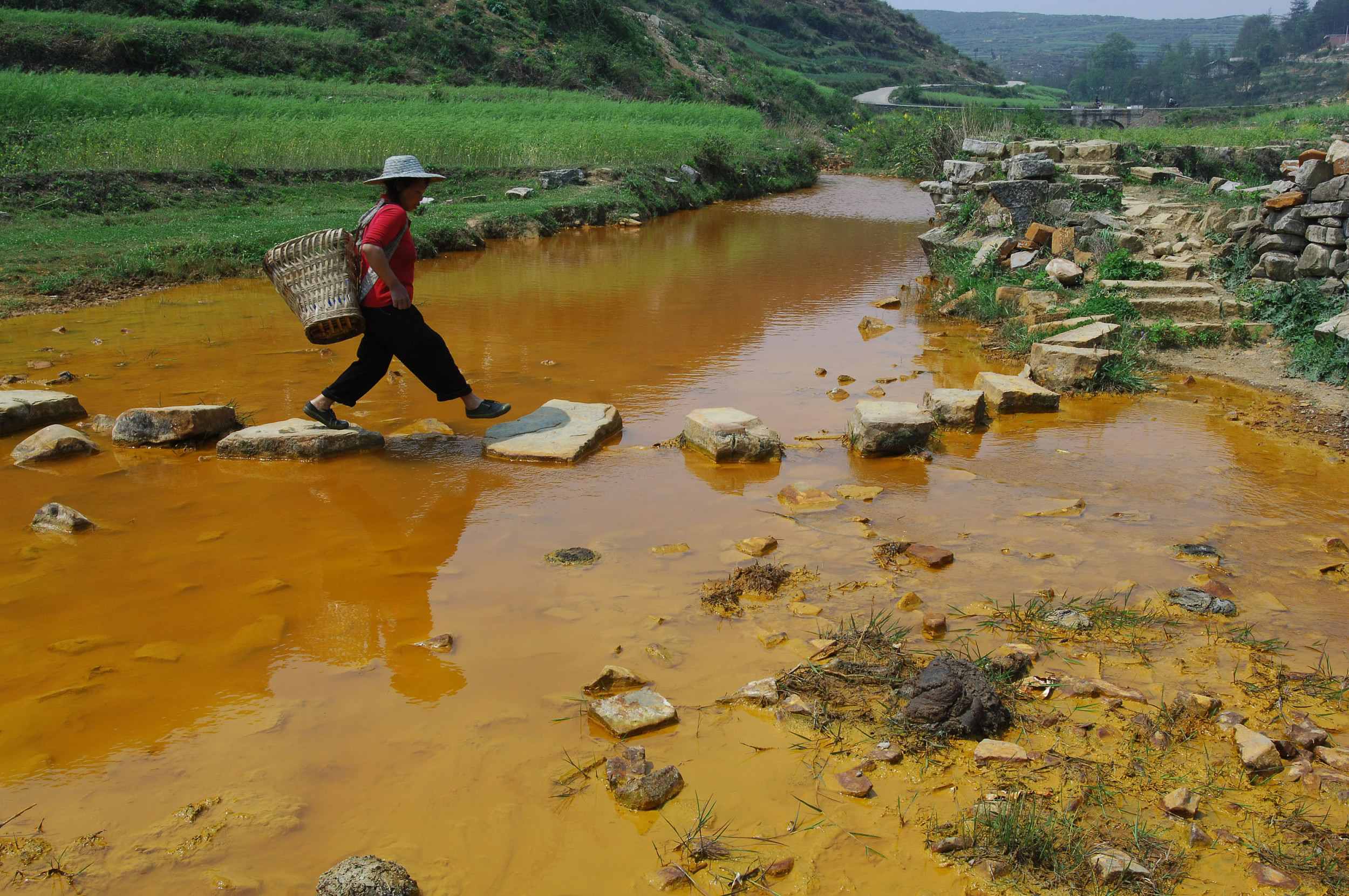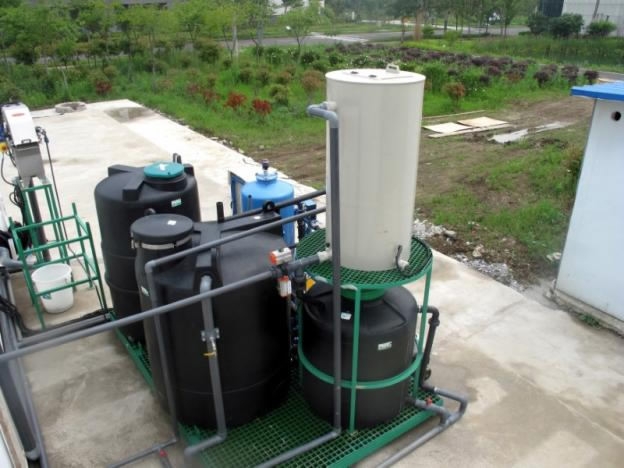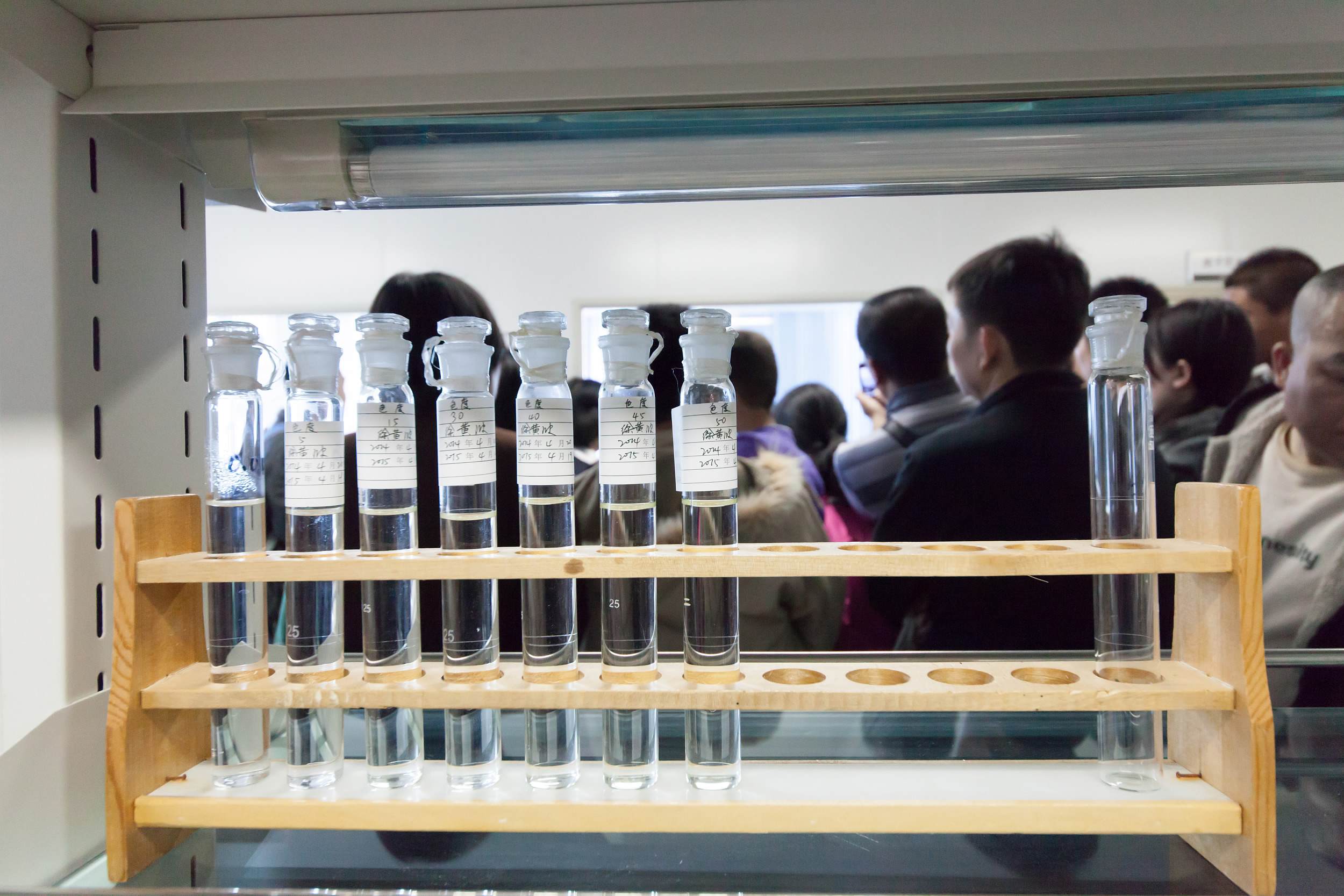With the largest population in the world, China is easily the top ranked country by the amount of wastewater produced.
According to a study conducted by China Water Risk, a non-profit organization focusing on water pollution in the country, the total discharge of wastewater in China is now up to 68.5 billion tons, or almost the same as the flow of the Yellow River, per annum.
Sewage comprises of discharge from domestic use (e.g. human waste, washing water, urban runoff) and industrial wastewater. The amount of wastewater is predicted to continually rise with urbanization and the increasing affluence of the country.

Coal plant sewage filter in a river in Guiyang, SW China's Guizhou Province./VCG Photo
China's Ministry of Water Resources said that more than 80 percent of the mainland's shallow groundwater in 2016 is not fit for human consumption because of "severe pollution" and contamination with heavy metals and toxic organic compounds. Groundwater plays a key role, as 70 percent of China's 1.3 billion people drink groundwater. Out of 660 cities, more than 400 cities source their drinking water from groundwater.
Opening the floodgates to private investors
Sewage treatment in Chinese cities has developed rapidly in recent years, playing an important role in boosting urban water quality. The International Water Association noted that from 2000 to 2016, the total number of wastewater treatment plants increased from 481 to 3,717. These plants enable China to process 140 million cubic meters per day, an amount surpassing all nations.
China also pledged to lay 126,000 kilometers of new sewage pipes by 2020 and raise urban wastewater treatment by 50 million cubic meters a day, or by as much as 20,000 Olympic-size swimming pools.
Foreign investors, though, can bring experience and new technologies to China. According to Reuters, international water treatment firms, like Israel's Emefcy, RWL Water controlled by Ron Lauder from Estee Lauder and France's Veolia, want to take advantage of China's annual environmental spend, which is estimated at three trillion yuan (441 billion US dollars) over the next five years.

Water purification equipment by Emefcy is seen at a school campus in Changzhou, Jiangsu Province, China on June 20, 2017 /REUTERS
"The market is massive," said Wong-Jin Yong, China CEO for Emefcy, which estimates the potential market opportunity in Beijing and nearby provinces at over one billion US dollars.
Emefcy is currently building a factory and plans to put eight small-scale sewage treatment units into operation in China by the end of this year. These small-scale units can treat 20,000 liters a day at a significantly lower energy cost, making them ideal for the rural areas.
RWL Water venture is set to merge with Emefcy this month to compete with local players such as state-run Beijing Enterprises Water Group and China Water Investment.
War on pollution
At the National People's Congress meetings in 2014, Premier Li Keqiang declared "a war on pollution," and has released a host of key water-related policies since then.
In June, China approved an amendment to its Water Pollution Prevention and Control Law which will take effect on January 1, 2018. The law includes provisions for a "river chief" system, making local officials directly responsible for water quality in their respective provinces, cities, counties or towns.

People visit Shijingshan Water Supply Company to see how tap-water produce in order to mark the World Water Day on March 2014. As water resources of Beijing decrease every year and water pollution is becoming more and more serious, the government is encouraging people to save water as much as possible. /VCG Photo
The amended law will strengthen controls on sewage and garbage treatment in rural regions and raise the upper limit of fines for water pollution to as high as one million yuan (147,000 US dollars).
In the first five months of this year, 13,478 cases of violation of the law have been investigated; triple the amount in the same period last year, according to the latest report from the Ministry of Environmental Protection in June.
Furthermore, China has promised to give environmentally friendly projects a leg up by providing banks more incentives to lend and encouraging green financing.
In China's murky waters, one thing is clear: China is committed to transforming its environment and economy. Funding, infrastructure, policy changes and other fundamental ingredients are being put in place to deliver the government's promise of fully improved water quality nationwide by 2030.









